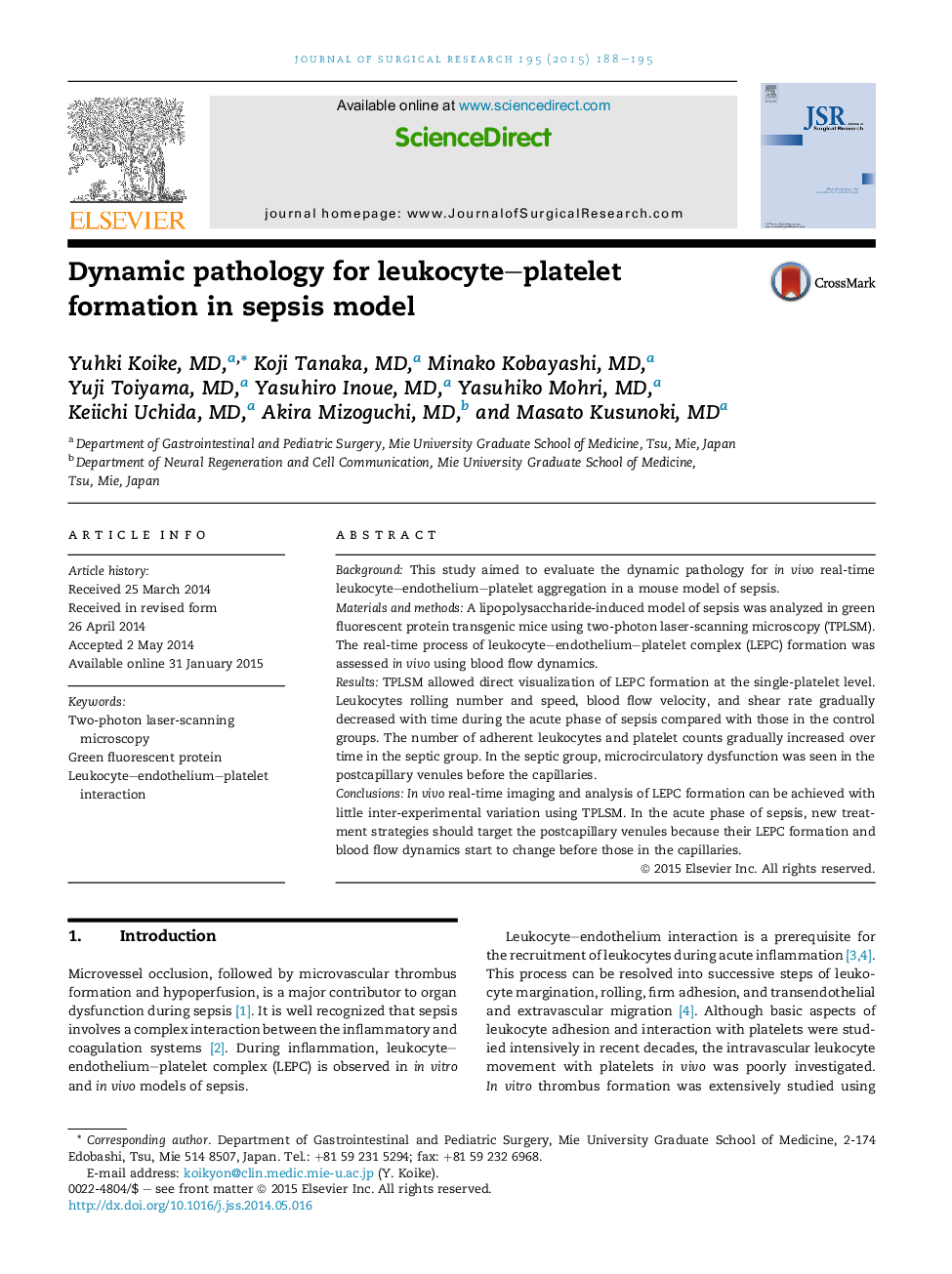| Article ID | Journal | Published Year | Pages | File Type |
|---|---|---|---|---|
| 4299888 | Journal of Surgical Research | 2015 | 8 Pages |
BackgroundThis study aimed to evaluate the dynamic pathology for in vivo real-time leukocyte–endothelium–platelet aggregation in a mouse model of sepsis.Materials and methodsA lipopolysaccharide-induced model of sepsis was analyzed in green fluorescent protein transgenic mice using two-photon laser-scanning microscopy (TPLSM). The real-time process of leukocyte–endothelium–platelet complex (LEPC) formation was assessed in vivo using blood flow dynamics.ResultsTPLSM allowed direct visualization of LEPC formation at the single-platelet level. Leukocytes rolling number and speed, blood flow velocity, and shear rate gradually decreased with time during the acute phase of sepsis compared with those in the control groups. The number of adherent leukocytes and platelet counts gradually increased over time in the septic group. In the septic group, microcirculatory dysfunction was seen in the postcapillary venules before the capillaries.ConclusionsIn vivo real-time imaging and analysis of LEPC formation can be achieved with little inter-experimental variation using TPLSM. In the acute phase of sepsis, new treatment strategies should target the postcapillary venules because their LEPC formation and blood flow dynamics start to change before those in the capillaries.
